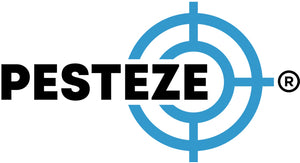PREVENTING RODENT INFESTATIONS IN HAY STORAGE

PREVENTING RODENT INFESTATIONS IN HAY STORAGE
SUMMARY
Rodents can quickly invade hay storage areas, contaminating feed, damaging bales, and creating unsanitary conditions. Preventing infestations requires a proactive approach, including secure storage, habitat management, and strategic deterrents. By implementing these techniques, you can protect your hay from rodent damage and maintain a clean, efficient storage space.
FEATURES
- Sealed Storage Containers: Use rodent-proof bins or enclosed hay storage units to prevent access.
- Elevated Stacking: Keep hay off the ground using pallets or racks to deter nesting.
- Proper Ventilation: Reduce moisture buildup, which attracts rodents and encourages mold growth.
- Physical Barriers: Install fine mesh screens or metal sheeting around storage areas to block entry points.
- Predator Assistance: Encourage barn cats or install owl boxes for natural rodent control.
- Traps And Baits: Strategically place traps and non-toxic baits around storage areas for active deterrence.
- Essential Oil Repellents: Apply peppermint or eucalyptus oil to discourage rodents naturally.
- Routine Cleaning: Remove spilled hay, debris, and food sources that may attract pests.
- Exclusion Techniques: Seal any cracks, gaps, or openings in barns and storage facilities.
- Regular Inspections: Check for signs of rodent activity and take immediate action if detected.
DESCRIPTION
Hay storage facilities provide an ideal environment for rodents due to the availability of food and shelter. Mice and rats can quickly establish nests within hay bales, leading to contamination, spoilage, and disease risks for livestock. Preventing infestations requires a combination of structural modifications, deterrents, and ongoing maintenance.
One of the most effective strategies is securing hay storage areas with rodent-proof containers or enclosed structures. If full enclosure isn’t possible, elevating hay bales on pallets helps prevent direct contact with rodents seeking nesting materials. Proper ventilation is also essential, as damp conditions attract rodents and promote mold growth, further threatening feed quality.
Implementing physical barriers, such as fine mesh wire or sheet metal along walls and entry points, can block rodent access. Additionally, natural predators, including barn cats and owls, provide an eco-friendly way to keep populations in check. Setting up traps and non-toxic baits in strategic locations helps monitor and reduce rodent presence without harming livestock.
For those seeking natural repellents, peppermint and eucalyptus essential oils effectively deter rodents without using harsh chemicals. Simply apply these oils to storage areas, particularly around known entry points. Routine cleaning is also crucial—removing spilled feed, loose hay, and debris ensures rodents have fewer resources to survive.
To further reduce infestation risks, practice exclusion techniques by sealing all cracks and gaps in barns, sheds, and other storage areas. Regular inspections for gnaw marks, droppings, or disturbed hay will allow for early detection and swift action against potential infestations.
By integrating these preventative measures, you can maintain a rodent-free hay storage environment, safeguarding your feed quality and ensuring healthier conditions for your livestock.
- Maanas Mehta


Comments 0